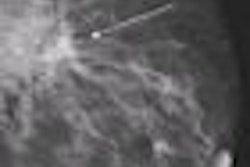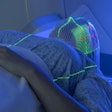Advanced imaging technologies are widely used for target delineation in planning radiation therapy by both academic and private practice radiation oncologists in the U.S., according to the results of a national survey of published in the December issue of the Journal of the American College of Radiology.
Despite imaging's widespread use, fewer than 25% of the survey respondents use these technologies for more than half of their patients.
Radiation oncologists at the Moores UCSD Cancer Center of the University of California San Diego, located in La Jolla, randomly selected 1,600 members of the American Society for Radiation Oncology (ASTRO) actively practicing in the U.S. from its 2008 directory of members. They received a 36% response rate to a 10-question survey distributed by e-mail and fax (JACR, 2009, Vol. 6:12, pp. 876-883).
The survey was designed to collect demographic information and address the use of advanced imaging technologies to augment target delineation in patients undergoing radiation therapy, according to principal investigator Dr. Loren K. Mell, radiation oncologist and assistant professor of head and neck cancers.
Private practice radiation oncologists represented 64.5% of the 386 respondents from 45 states. Academic radiologists represented 34.5%. The respondents had a median of 16 years experience, ranging from one to 44 years in practice.
Responses showed no difference in the prevalence of advanced image guidance use between academic and private practice radiation oncologists, with 95% using one or more of the following modalities: FDG-PET (78.3%), MRI (73.1%), 4D CT (42.3%), functional MRI (9.9%), SPECT 8.1%), MR spectroscopy (7.6%) and non-FDG-PET (2.9%).
The study revealed that physicians in solo practices were less likely to use advanced imaging, a fact that the authors suggest may be attributed to decreased time and access. As might be expected, specialists used advanced imaging modalities more frequently. There was no correlation between the experience level and number of years in practice and the frequency of use by either specialists or generalists.
The authors also learned that 65.6% of the respondents planned to increase their use of advanced imaging modalities to augment target delineation.
Related Reading
On-board imaging adds accuracy to IMRT for prostate, June 25, 2008
DW-MRI shows value in RTP for head and neck cancer, June 3, 2008
IMRT to 4D radiotherapy rely on QA for accuracy, May 4, 2006
PET/CT success follows heavy dose of preparation, October 14, 2004
Studies illustrate benefits of FDG-PET, pre-planning in radiotherapy, January 27, 2003
Copyright © 2009 AuntMinnie.com


















